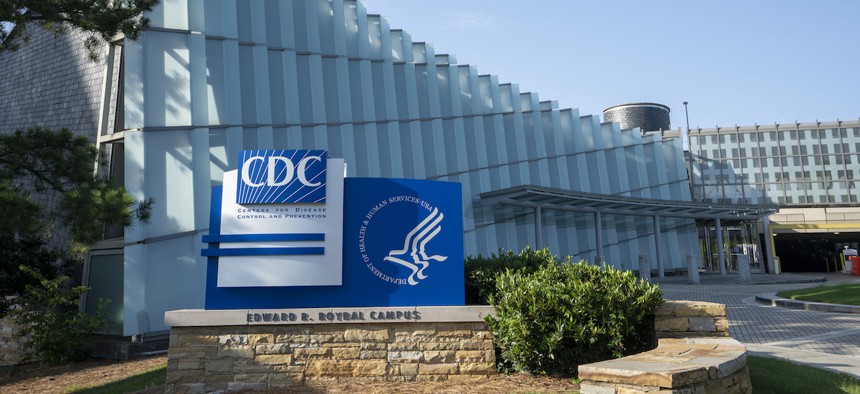Cuts to federal health agency raise concerns about state and local impacts

hapabapa via Getty Images
The staff and budget cuts at the federal level will hamper state and local health departments’ capacity to juggle public health needs like disease surveillance and data modernization, experts say.
The Trump administration followed through with its March 27 announcement that it would drastically reduce the U.S. Health and Human Services Department workforce after laying off 10,000 employees this morning.
The mass layoffs, impacting agencies like the Centers for Disease Control and Prevention and the National Institutes of Health, falls in line with President Donald Trump’s recent executive order calling for improved government efficiency across federal agencies. Under the order, federal officials also called for Health and Human Services to consolidate its 28 divisions into 15, reduce 10 regional offices to five and centralize services like IT, human resources, procurement, policy and external affairs.
Federal officials also recently axed more than $11 billion in COVID-related federal grants to state and local health departments for services like virus testing and vaccinations. According to officials, the changes to Health and Human Services aim to save taxpayers $1.8 billion by eliminating redundant processes and streamlining the health department’s response to public health threats.
But several public health experts say otherwise. In a media briefing today hosted by public health organizations, experts raised concerns that the drastic reductions could have dire impacts on state and local governments’ ability to manage public health risks like disease surveillance and data modernization efforts.
“This is a complete disregard for thousands who have dedicated themselves to public service,” said Sharon Gilmartin, executive director of the Safe States Alliance. “Workers all the way from the federal down to the state level are being removed from their positions, which leaves us asking the question of who will continue the work in the midst of public health crises?”
Across the U.S., for instance, some health departments have reported that they are preparing to eliminate data scientists and epidemiologists, the Texas Standard reported.
In the Lone Star state, for example, Director and Health Authority for the Dallas County Health and Human Services Phil Huang said the department has laid off 11 members of its full-time staff and 10 part-time individuals who were a part of the agency’s epidemiology group, including data and health IT workers.
Those staff cuts leave health officials concerned about their ability to manage disease outbreaks amid “the lack of support being available to us from CDC,” Huang said, pointing to the measles outbreak in Texas that has infected more than 400 people, the majority of whom are children and teenagers, since January.
Aside from impacts to health departments’ staff, Huang also underscored how a lack of federal funding could hinder state and local governments’ capacity to track and leverage data to respond to public health crises.
DCHHS, for instance, has been working with the University of Texas to develop predictive modeling capabilities to monitor public health issues, he said, but losing the federal support to continue that work of containing virus outbreaks or reducing substance use overdoses “is really catastrophic to us on the ground level.”
Data modernization efforts aimed at improving public health responses will be slowed down, setting public health efforts back by decades, Huang said. “It’s taken so long to develop this expertise and the systems to [leverage data],” he explained, and the federal government’s decision to cut back on HHS services “is destroying that.”
Several other state and local health agencies are also feeling the heat of the federal government’s actions. Utah officials announced that the state’s Department of Health and Human Services will no longer receive about $98 million in federal grants that were slated to last through 2026, and at least 69 state and local health department employees will be laid off.
In Arizona, the state Department of Health Services announced it will lose $190 million in grants, particularly impacting county-level health agencies. Mohave and Pima Counties, for instance, could lay off dozens of their public health employees. And the Arkansas Department of Health announced recently that it would have to eliminate 15 of its positions as a result of losing COVID-era funding that supported those roles.
Amid several public health concerns, such as high maternal mortality rates, increasing bird flu infections and growing risks of substance use disorders, “these layoffs are going to disrupt actions that keep people healthy and safe and able to live their lives without fear, possibly for years to come,” Lori Freeman, chief executive officer of the National Association of County and City Health Officials.






